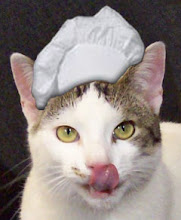
Caponata Siciliana (Sicilia)
Caponata is one of the most famous and delicious vegetarian treat coming out of Sicily. It is a perfect antipasto, tapa, light meal with a freshly baked crusty bread, or accompaniment for the main dishes when you have guests on a hot summer evening, as it can be prepared in advance, it tastes better after being rested for some hours and can be enjoyed at room temperature. Alternatively, you can use grilled bell peppers in place of aubergine, (or both!) equally tasty!
3 large but slender aubergines, cut into cubes
olive oil
1-1,5 onion, roughly chopped
1 small bunch flat-leaf parsley, chopped
2 tablespoons capers, rinsed, drained and chopped
about 20 green olives, deseeded and chopped
2 tbsp white wine vinegar or apple vinegar
2 tbsp. sultanas, soaked in water for about half an hour
3 ripe tomatoes, roughly chopped
1 tbsp sugar
2 tablespoons pine nuts
salt (optional)
good quality extra virgine olive oil
Soak the aubergine chunks in a cold, salted water for at least 30 minutes, then drain, rinse well and pat dry.
In a large skillet fry the aubergine in a sufficient amount of olive oil. Gently shaking the pan now and then cook for about 4-5 minutes until the aubergines are nicely coloured. (Try not to overcrowd the skillet. If the skillet is not big enough, cook in two or more batches.) Set the aubergine aside on an absorbent paper.
Sautè the onion in just enough olive oil until onion becomes tender. Add the prepared capers, olive, oregano, pine nuts, sultanas, sautè for another couple of minutes.
Add the tomatoes and let it simmer until tender, about 15 minutes.
Dry roast the pine nuts in a stainless steel or cast iron skillet, or in the oven until lightly coloured (take care not to burn them!)
Add the pine nuts, aubergine chunks, parsley, vinegar and sugar, toss well and continue to cook until the vinegar is evaporated.
If needed add a little more salt/sugar to your preferred taste.
Ideally let the completed dish rest for a few hours to let the flavour bind together.
Drizzle good extre virgine olive oil and serve warm or room temperature.




